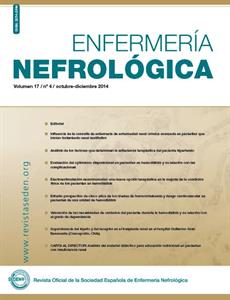Contenido del artículo principal
Resumen
Al ser el trasplante renal la mejor opción terapéutica para el tratamiento de la Insuficiencia Renal Terminal, en la ciudad de Concepción (Chile), se inició el programa de Trasplante Renal (TX) en el año 1994. El objetivo de este trabajo es caracterizar la supervivencia del injerto renal de los TX realizados un hospital, de dicha ciudad mediante un estudio descriptivo, transversal, correlacional y comparativo de los resultados obtenidos en dos periodos, A: de 1994 a 2003 y, B: de 2004 a 2012. El análisis estadístico se realizó con el software SPSSv20.0. La funcion de supervivencia con la prueba no-paramétrica de Kaplan-Meier; y para comparaciones de variables se utilizó el test log-rank. De los resultados obtenidos cabe destacar que la supervivencia del paciente trasplantado en el período A fue mejor el primer al año (96%), pero fue menor a los 3 (90%), 5 (86%) y 10 años (72%) respecto al período B en que los valores fueron al año 95%, a los 3 el 90% a los 5 y 10 años el 87% y a los 10 años. La supervivencia del injerto tambien fue mayor en el periodo A que en el B, y mejor cuando hubo un tiempo de isquemia inferior a 24 horas y sin diferencias en relación al sexo del donante y del receptor y al tipo de tratamiento inmunosupreso. Las infeciones fueron la primera causa de muerte del paciente y las complicaciones quirúrgicas la principal causa de la pérdida del injerto.
Palabras clave
Detalles del artículo
Aviso de derechos de autor/a
© Los autores ceden de forma no exclusiva los derechos de explotación de los trabajos publicados y consiente en que su uso y distribución se realice con la Licencia Creative Commons Atribución - No comercial 4.0 Internacional (CC BY-NC 4.0). Puede consultar desde aquí la versión informativa y el texto legal de la licencia. Esta circunstancia ha de hacerse constar expresamente de esta forma cuando sea necesario.




